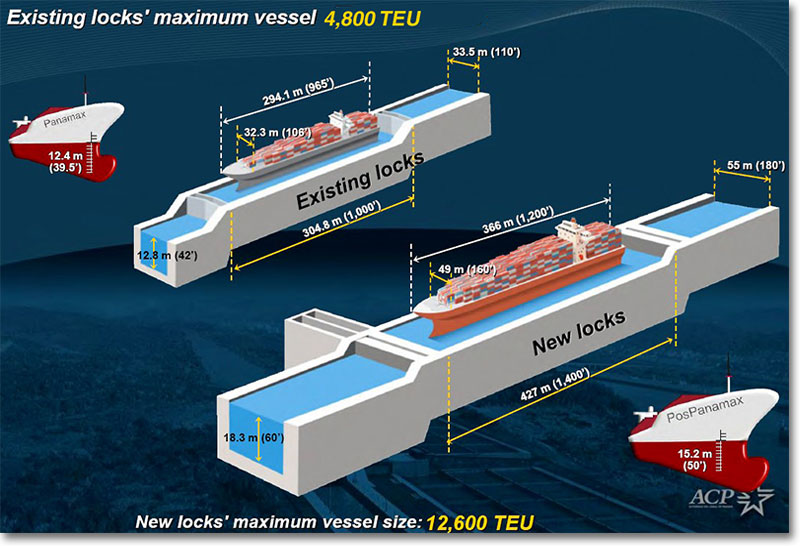Scientists have warned about the potentially devastating effects of El Niño; a phenomenon which sees above-normal temperatures in the Pacific Ocean cause extreme weather around the world.
Both droughts and flash flooding are amongst the most dangerous consequences.
Canal authorities said that the decision to restrict large ships had been made as a result of El Niño-related droughts (Draft Restrictions to 11.89 meters (39.0 feet) on September 8, 2015, PDF).
Beginning on 8 September, the greatest draft permitted will be 39 feet, 11.89m, down from the current level of 39.5 feet, 12.04m.
It is thought that the change could affect around a fifth of ships using the route.
The Panama Canal Authority warned that if the droughts persist, they may have to reduce the draft size further to 38.5 feet, 11.7m, from 16 September.
El Niño Strikes Again
The measures are being imposed because water levels in the lakes that feed the canal have fallen in dry conditions caused by the El Niño weather phenomenon. Canal administrator Jorge Quijano said the month of June and the first half of July had been the driest period in 102 years.
The last time such restrictions were introduced was in March 1998, when there were particularly strong El Niño effects.
The Panama Canal, 77 kilometers (48 miles) in length, is an important transport link between the Atlantic and Pacific Oceans.
The Wall Street Journal reported that Supply chain experts said the new restrictions could force shipping lines traveling from Asia to the U.S. East and Gulf Coasts via the canal to leave some cargo behind in order to reduce their draft.
Smaller customers that don’t have well-established relationships with ocean carriers could see their shipments held back, said Joel Sutherland, director of the Supply Chain Management Institute at the University of San Diego’s business school.
Even a small amount of delayed cargo can have a far-reaching impact, he added. For example, manufacturing companies waiting on key components could be forced to shut down temporarily.
“Everything backs up,” Mr. Sutherland said. “You could have some stock-outs, you could have some promises that aren’t met.”
NEWS: Union Threat to Strike over Panama Canal Expansion Gives Suez a Boost
Related: 2015 Ocean Cargo Crisis Calls for Collaboration
Ports, terminals, and ocean carriers currently comprise a family in severe dysfunction and denial, but can the intervention of shippers restore some badly needed order?

Article topics
Email Sign Up
















